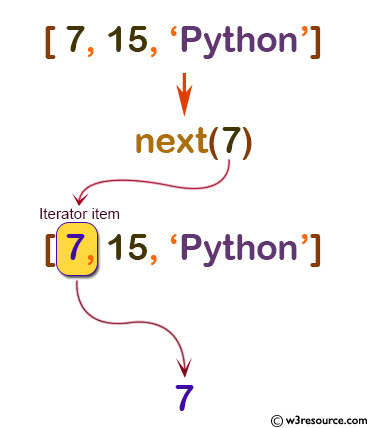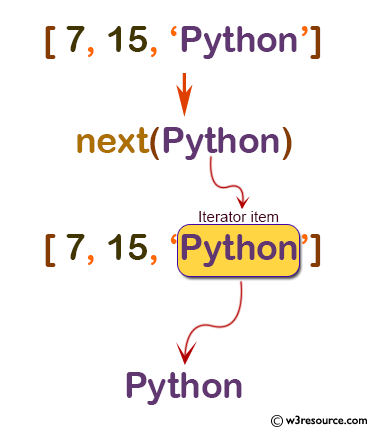Python: next() function
next() function
The next() function is used to get the next item in an iterator.
Version:
(Python 3.2.5)
Syntax:
next(iterator[, default])
Parameter:
| Name | Description | Required / Optional |
|---|---|---|
| iterator | An iterable object. | Required |
| default | This value is returned if the iterator is exhausted (no items left). | Optional |
Return value:
Returns the next item of the iterator.
Example: Python next() function
items = [7, 15, 'Python']
# converting list to iterator
itemsIterator = iter(items)
print(itemsIterator)
# Output: 7
print(next(itemsIterator))
# Output: 15
print(next(itemsIterator))
# Output: 'Python'
print(next(itemsIterator))
Output:
<list_iterator object at 0x7f8b758a8470> 7 15 Python
Pictorial Presentation:

Pictorial Presentation:

Python Code Editor:
Previous: min()
Next: object()
Test your Python skills with w3resource's quiz
